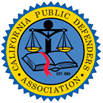Overview:
When an adult is caring for a child, the law imposes certain obligations on that adult. These obligations are designed to ensure that a child under the care of an adult is not exposed to unnecessary or unreasonably dangerous or unhealthy situations.
When an adult fails to adequately care for a child, or to avoid unnecessarily exposing a child to an unreasonably dangerous situation, California law treats that as a criminal matter, and may charge the adult under the Penal Code with what is commonly referred to as child endangerment.
A person, of course, can be charged with child endangerment if they intentionally put a child in an unreasonably dangerous situation. A person may also be charged with child endangerment, even if they did not intend to place a child in a harmful or dangerous situation, but it appears that they were able to prevent the child from being placed in such a situation and failed to do so.
Under California law, child endangerment is what is commonly known as a "wobbler," and can be charged as either a felony or a misdemeanor. The determination of whether to charge as a felony or misdemeanor is made by the prosecutor, who will generally decide based on the facts and circumstances surrounding the events giving rise to the charge. However, in the particular case of child endangerment, the law carves out a circumstance where the crime may only be charged as a misdemeanor.
If an adult is found to have committed the crime of child endangerment they can face significant penalties even if the crime is only charged as a misdemeanor. These penalties can include significant jail time, probation and fines. Of course, if the offense is prosecuted as a felony, the penalties can be much more severe.
What is Child Endangerment?:
The crime of felony or misdemeanor child endangerment is defined by California Penal Code section 273a(a).
A person commits child endangerment when a person willfully causes or permits a child to suffer unjustifiable physical or mental suffering, under circumstances which are likely to produce great bodily harm. Child endangerment is also committed when a person has care or custody of a child, and they cause or permit the child to be injured, or willfully permit that child to be exposed to a situation where their health and wellbeing are put in jeopardy.
Misdemeanor child endangerment is defined similarly to that of its felony counterpart in California Penal Code section 273a(b). The key difference in the definitions of felony or misdemeanor and misdemeanor-only child endangerment is whether or not the conditions and circumstances under which an adult places a child in their care are "likely to produce great bodily harm or death." In the case of felony or misdemeanor child endangerment, the conditions and circumstances the child faces are likely to produce great bodily harm or death; while for misdemeanor-only child endangerment, they are not.
Elements of Child Endangerment - Definitions:
There are a number of legal terms essential to the determination of whether an adult committed the crime of child endangerment. In order to know whether a particular action, inaction or set of circumstances constitutes child endangerment; it is important to have an understanding of the meaning of these terms, and how they are interpreted by courts.
The critical terms that need to be understood for the crime of child endangerment are:
- "willfully";
- "criminal negligence";
- "unjustifiable mental suffering or physical pain"; and
- "great bodily injury."
Willfully:
In simplest terms, to do something "willfully" means to do something intentionally. However, for purposes of understanding how the term is relates to a crime such as child endangerment, it is important to know how the term is applied more so than what the term means.
An individual can be deemed to have acted willfully so long as they intended to commit a particular, prohibited act. Whether or not they intended to violate the law, or achieve a particular result, is irrelevant.
For example, if an adult intentionally hits a child, causing them a serious injury; they will be found to have acted willfully even if they did not intend to commit an illegal act, or intend to injure the child.
Criminal Negligence:
The definition for ordinary negligence is fairly straightforward. It means failing to act as a "reasonable person" would act under the circumstances. Criminal negligence is a similar type of behavior, but is of a kind that is significantly more pronounced.
To determine whether an act constitutes criminal negligence, courts will generally ask the following questions:
- Did the individual's acts constitute a disregard for the life of another human being?;
- Did the individual's acts reflect indifference regarding the consequences of their actions?;
- Did the individual's acts demonstrate recklessness that grossly (i.e., seriously or to a great degree) departs from the way an ordinarily careful person would behave under the circumstances?; and
- Would a reasonable person typically know that acting in the way that the individual acted would tend to result in causing harm to someone else?
If the answer to one or more of these questions is "yes," it is possible that the individual acted with criminal negligence. The more of these questions that are answered in the affirmative, the more likely it is that the individual did indeed act in a criminally negligent fashion.
Unjustifiable Mental Suffering or Physical Pain:
In order to understand what constitutes unjustifiable mental suffering or physical pain, you need to know the inverse. In other words, what constitutes "justifiable" mental suffering or physical pain?
There are a wide range of things that can cause mental suffering in a child. For example, something as simple as telling them "no" when they ask for a cookie can cause a degree of mental suffering. Without a doubt, that is an example of causing justifiable mental suffering. On the other hand, screaming at a child for minutes on end when they ask for a cookie, causing them mental suffering (all things being equal) is undoubtedly unjustifiable. So, where is the line?
The way that courts interpret the line between justifiable and unjustifiable is based on two questions. First, is the action that results in mental suffering not something that is "reasonably necessary?" Second, is the action that results in mental suffering something that is excessive in light of the particular circumstances surrounding the action? If the answer to either of these questions is "yes" then the action will be considered unjustifiable.
The same analysis applies to an action that causes a child physical pain. For purposes of illustration, consider a child reaching for a hot pan on the stove that would burn them if they touched it. If an adult were to strike the child's hand to prevent them from being burned, it could be considered reasonably necessary, even if it hurts the child somewhat. However, in that same situation, if the adult strikes the child's hand so hard that it causes a sprain, broken bone or large bruise; even if the action was reasonably necessary, it could be considered excessive under the circumstances and therefore unjustifiable.
Great Bodily Injury:
Great bodily injury is a term that is used throughout California criminal law, but does not have a specifically-stated or enumerated definition. This tends to cause prosecutors to allege it even when it is clearly questionable as to whether an injury constitutes "great bodily injury" or not. As such, the term requires a little unpacking.
First off, great bodily injury must be an injury to the body of another person. Anything that constitutes mental or emotional injury cannot constitute a bodily injury.
Second, there must be an injury, not simply physical suffering. For example, a typical spanking inflicted on a child can cause suffering, but typically no injury will result.
Finally, any physical injury inflict must be "great." There is no bright-line rule as to what type of injury is considered "great," and what is merely minor or trivial. However, there are some types of injuries, such as broken bones and lacerations requiring stitches (and certainly anything more severe) that are generally understood to be "great" bodily injuries. For other cases, courts will generally look to the severity of an injury (e.g., is a bruise large or small) the degree of pain caused by the injury, and whether or not the injury required medical care and to what degree. Ultimately, the determination of whether a bodily injury is "great" or not will need to be determined by a fact finder, based on all the facts and circumstances of a particular case.
Examples of Child Endangerment:
(1) Allowing a child to play with dangerous objects, such as matches, knives or guns;
(2) Leaving a child unsupervised for a significant period of time, whether at home, in a motor vehicle or in public;
(3) Failing to secure a child in a motor vehicle;
(4) Exposing a child to sexual activity;
(5) Exposing a child to illegal activity, such as drug dealing or drug manufacturing;
(6) Leaving a child with a caregiver or other person who they knew, or should have known, was likely to harm the child;
(7) Unreasonable discipline, such as corporal punishment sufficient to cause severe physical or emotional suffering; and
(8) Becoming intoxicated while caring for a child, to the point where adequate care cannot be performed. This situation arises often when an adult drives under the influence while transporting a child passenger. Such actions are often charged as child endangerment.
How Does Child Endangerment Differ From Child Abuse:
Child endangerment and child abuse are very closely related. Both crimes are considered "wobblers" and can be charged as either misdemeanors or felonies. Many of the same sets of circumstances can lead to prosecution for child endangerment, child abuse or both. However, the crime of child abuse is directed specifically at physical abuse of a child. It is defined in California Penal Code section 273d as inflicting cruel or inhuman corporal punishment on a child, or causing any injury to a child, which results in a traumatic condition.
While child abuse is directed squarely at the physical abuse of children, whether sexual or otherwise; child endangerment encompasses both physical and mental suffering of a child, as well as the health and wellbeing of a child.
For example, if a an adult caring for a child fails to adequately feed or dress a child, such that they become malnourished or suffer from exposure, that person cannot be charged with child abuse, but they can be charged with child endangerment. Likewise, if an adult with a child in their care exposes that child to domestic violence, or some other type of violence, they can be charged with child endangerment, but not child abuse. If that adult physically beats the child, they can be charged with both child endangerment and child abuse.
How Does a Prosecutor Prove Child Endangerment:
To prove that the defendant is guilty of child endangerment under Penal Code Section 273a, the prosecution must prove the following facts or elements:
(1) The defendant (a) willfully inflicted physical pain or mental suffering on a child that was unjustifiable, or (b) willfully caused or permitted a child to suffer physical pain or mental suffering that was unjustifiable, or (c) caused or permitted a child in their care or custody to be injured, or (d) caused or permitted a child in their care or custody to be placed in a dangerous situation; and
(2) The defendant was criminally negligent (if accused of (b) (c) or (d)); and
(3) The defendant's actions were not part of reasonable discipline of their child;
Penalties:
Child Endangerment is a type of crime commonly known as a wobbler. Meaning it can be charged as either a misdemeanor or a felony. The type of treatment it receives depends on the circumstances surrounding the crime.
Different factors, such whether the circumstances and conditions were likely to produce great bodily harm or death, are all considered by the prosecutor; who then decides whether to proceed with misdemeanor or felony changes.
A misdemeanor can result in the following penalties:
(1) Up to 4 years, but not less than 2 years, summary probation;
(2) Up to one year in county jail; and/or
(3) A fine of up to one thousand dollars ($1000.)
A felony can result in the following penalties:
(1 Up to 5 years, but not less than 2 years, formal probation;
(2) Two (2), four (4) or six (6) years in state prison; and/or
(3) A fine of up to ten thousand dollars ($10,000.)
Additional Penalties:
If a person is convicted of child endangerment, and is granted probation, they face more than just jail/prison time, probation and/or fines.
As a term of probation, anyone convicted of child endangerment must:
(1) be subject to a court protective order. This protects the victim from any other threats or violent acts, and if necessary or appropriate, the order can impose exclusion from a residence or a requirement to stay-away; and
(2) complete at least one year of a treatment education program for child abusers, to begin immediately after probation is granted;
(3) pay all reasonably imposed fees that are due to the counseling program
If the court determines that the interests of justice are not served by imposing these additional conditions, it may waive them.
Defenses:
False Accusation:
When child endangerment is suspected, police are often quick to act and make an arrest before thoroughly investigating. This has led to more than one case in which a caregiver, parent or other family member has been falsely accused of child endangerment. On occasion ex-spouses, spouses or ex-boyfriends/girlfriends have been known to make false allegations out of anger, or a desire for revenge. It is also not unheard of for an allegation of child endangerment to come from a miscommunication or misunderstanding between spouses or other family members.
The Act Was Not Willful:
The crime of child endangerment requires intent on the part of the defendant. They must have either intended to act in a manner that placed a child in a dangerous situation, or intended to commit an act that inflicted injury. If the defendant can demonstrate that they did not intentionally act in a manner that inflicted an injury or placed the child in a dangerous situation, then they can't be convicted of child endangerment. It may also be sufficient if the defendant can show they were unaware that they were putting a child in danger, or creating a potential for an injury to be inflicted. It is important to note, however, that any claim of ignorance as to the dangerous situation in which a defendant places a child, or the consequences of their actions, must be reasonable. If a caregiver is reckless with a child, or willfully ignorant, this type of defense will likely fail.
Parent's Right to Discipline:
It may sometimes seem that in this day and age, a parent may not engage in any sort of corporal discipline (e.g., spanking.) However, California law still recognizes a parent's right to employ corporal punishment with regard to their own children, to a certain extent.
If the defendant was using reasonable corporal punishment to discipline their child they can't be found guilty of child endangerment. If, however, a court determines that a parent has gone beyond what is reasonable, they may still be convicted of child endangerment as well as child abuse.
There is no bright-line rule to determine what constitutes reasonable corporal discipline. A court will look at the facts and circumstances of a case, and make a determination. There are, however, certain relevant inquiries that help a court make that determination. Was the punishment warranted at the time? Were other, non-violent methods of discipline attempted prior? Does the punishment seem appropriate for the behavior the parent was attempting to correct, or does it seem excessive? Did the spanking leave physical marks on the child? A court will look at the specific facts of the case, taking into account the arguments made by attorneys for both sides, and make a determination. If the court determines that the punishment was reasonable, it will not convict the parent of child endangerment.
Actual Case:
Sally was the step-mother of a seven year old girl, Tania. Bill was Tania’s dad. There was a contentious relationship between Bill and his former spouse. One time after Tania had spent time with Bill and Sally Tania’s mother noticed that there were some marks on the back of Tania’s legs. Tania told her mother that Sally had hit her with a hanger. Tania reported the marks to the police as possible child abuse.
As it turned out, Tania was a very defiant child and often was disobeying reasonable requests of Sally and Bill. Sally showed a lot of restraint, but one time she did start to give Tania a spanking with her open hand. During the spanking Tania started struggling and as a result the spanking left marks on her legs.
I gathered a number of letters of support for Sally. I had Sally enter parenting classes. I gathered school information for Tania demonstrating that she got in a lot of trouble in school.
As a result I was able to convince the District Attorney to offer a diversion program to Sally. After a year the charges against Sally were dismissed. As a result of this disposition Sally was able to keep her job as a school bus driver.
How We can Help:
We, at Foos Gavin Law Firm are an aggressive, dynamic team, dedicated to getting you the best results possible on your case. We scour the police report to determine any issues that will benefit you. We go over every detail of the case with you to help plan a strategy that we can all buy into. We work with the best investigators to get to the bottom of any evidence that will help your case. We employ excellent expert witnesses, if necessary, to further our goals.
I, David Foos, have 40 years’ experience representing people accused of crimes. I have been a Deputy Public Defender for 8 years, and then spent 16 years on the bench as a Judicial Officer that heard criminal and civil matters. I have developed relationships and knowledge and bring all my skill and contacts to bear to achieve success in your case. Please contact me at 916-770-3500 or by email at david@foosgavinlaw.com to discuss your case. The initial consultation is at no cost to you.















